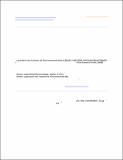Por favor, use este identificador para citar o enlazar a este item:
http://hdl.handle.net/10261/321097COMPARTIR / EXPORTAR:
 SHARE SHARE
 CORE
BASE CORE
BASE
|
|
| Visualizar otros formatos: MARC | Dublin Core | RDF | ORE | MODS | METS | DIDL | DATACITE | |

| Título: | Exposure of marine mussels Mytilus spp. to polystyrene microplastics: toxicity and influence on fluoranthene bioaccumulation |
Autor: | Paul-Pont, I.; Lacroix, C.; González-Fernández, Carmen; Hegaret, H.; Lambert, C.; Le Goïc, N.; Frére, L.; Cassone, A.L.; Sussarellu, R.; Fabioux, C.; Guyomarch, J.; Albentosa, Marina CSIC ORCID; Huvet, A.; Soudant, P. | Palabras clave: | Medio Marino y Protección Ambiental Microplastics Centro Oceanográfico de Murcia Fluoranthene Mussel Depuration Oxidative system |
Fecha de publicación: | 2016 | Editor: | Elsevier BV | Resumen: | The effects of polystyrene microbeads (micro-PS; mix of 2 and 6 μm; final concentration: 32 μg L−1) alone or in combination with fluoranthene (30 μg L−1) on marine mussels Mytilus spp. were investigated after 7 days of exposure and 7 days of depuration under controlled laboratory conditions. Overall, fluoranthene was mostly associated to algae Chaetoceros muelleri (partition coefficient Log Kp = 4.8) used as a food source for mussels during the experiment. When micro-PS were added in the system, a fraction of FLU transferred from the algae to the microbeads as suggested by the higher partition coefficient of micro-PS (Log Kp = 6.6), which confirmed a high affinity of fluoranthene for polystyrene microparticles. However, this did not lead to a modification of fluoranthene bioaccumulation in exposed individuals, suggesting that micro-PS had a minor role in transferring fluoranthene to mussels tissues in comparison with waterborne and foodborne exposures. After depuration, a higher fluoranthene concentration was detected in mussels exposed to micro-PS and fluoranthene, as compared to mussels exposed to fluoranthene alone. This may be related to direct effect of micro-PS on detoxification mechanisms, as suggested by a down regulation of a P-glycoprotein involved in pollutant excretion, but other factors such as an impairment of the filtration activity or presence of remaining beads in the gut cannot be excluded. Micro-PS alone led to an increase in hemocyte mortality and triggered substantial modulation of cellular oxidative balance: increase in reactive oxygen species production in hemocytes and enhancement of anti-oxidant and glutathione-related enzymes in mussel tissues. Highest histopathological damages and levels of anti-oxidant markers were observed in mussels exposed to micro-PS together with fluoranthene. Overall these results suggest that under the experimental conditions of our study micro-PS led to direct toxic effects at tissue, cellular and molecular levels, and modulated fluoranthene kinetics and toxicity in marine mussels. | URI: | http://hdl.handle.net/10261/321097 | DOI: | 10.1016/j.envpol.2016.06.039 |
| Aparece en las colecciones: | (IEO) Artículos |
Ficheros en este ítem:
| Fichero | Descripción | Tamaño | Formato | |
|---|---|---|---|---|
| 45848.pdf | 1,6 MB | Adobe PDF |  Visualizar/Abrir |
CORE Recommender
SCOPUSTM
Citations
486
checked on 05-may-2024
WEB OF SCIENCETM
Citations
438
checked on 22-feb-2024
Page view(s)
16
checked on 21-may-2024
Download(s)
59
checked on 21-may-2024
Google ScholarTM
Check
Altmetric
Altmetric
NOTA: Los ítems de Digital.CSIC están protegidos por copyright, con todos los derechos reservados, a menos que se indique lo contrario.
